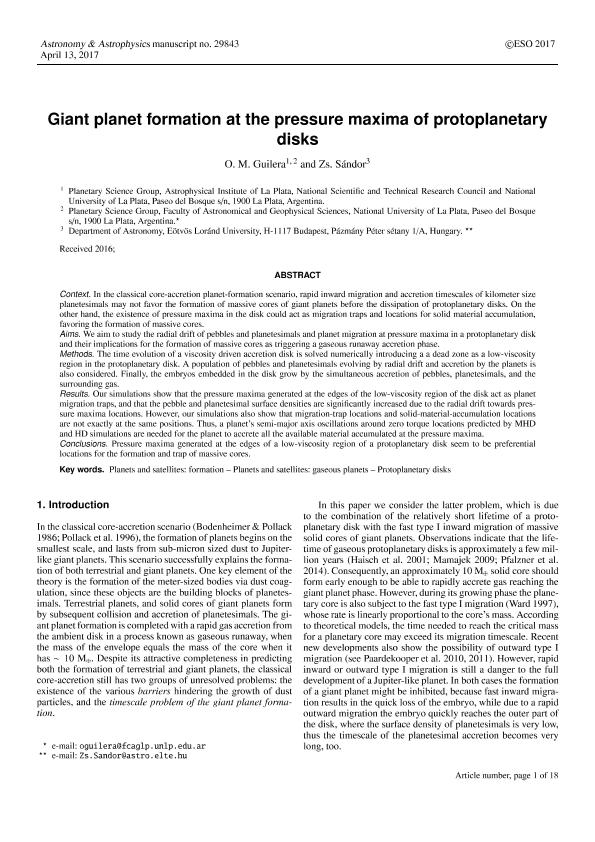Artículo
Giant planet formation at the pressure maxima of protoplanetary disks
Fecha de publicación:
04/2017
Editorial:
EDP Sciences
Revista:
Astronomy and Astrophysics
ISSN:
0004-6361
Idioma:
Inglés
Tipo de recurso:
Artículo publicado
Clasificación temática:
Resumen
Context. In the classical core-accretion planet-formation scenario, rapid inward migration and accretion timescales of kilometer sizeplanetesimals may not favor the formation of massive cores of giant planets before the dissipation of protoplanetary disks. On theother hand, the existence of pressure maxima in the disk could act as migration traps and locations for solid material accumulation,favoring the formation of massive cores.Aims. We aim to study the radial drift of pebbles and planetesimals and planet migration at pressure maxima in a protoplanetary diskand their implications for the formation of massive cores as triggering a gaseous runaway accretion phase.Methods. The time evolution of a viscosity driven accretion disk is solved numerically introducing a a dead zone as a low-viscosityregion in the protoplanetary disk. A population of pebbles and planetesimals evolving by radial drift and accretion by the planets isalso considered. Finally, the embryos embedded in the disk grow by the simultaneous accretion of pebbles, planetesimals, and thesurrounding gas.Results. Our simulations show that the pressure maxima generated at the edges of the low-viscosity region of the disk act as planetmigration traps, and that the pebble and planetesimal surface densities are significantly increased due to the radial drift towards pressuremaxima locations. However, our simulations also show that migration-trap locations and solid-material-accumulation locationsare not exactly at the same positions. Thus, a planet?s semi-major axis oscillations around zero torque locations predicted by MHDand HD simulations are needed for the planet to accrete all the available material accumulated at the pressure maxima.Conclusions. Pressure maxima generated at the edges of a low-viscosity region of a protoplanetary disk seem to be preferentiallocations for the formation and trap of massive cores.
Archivos asociados
Licencia
Identificadores
Colecciones
Articulos(IALP)
Articulos de INST.DE ASTROFISICA LA PLATA
Articulos de INST.DE ASTROFISICA LA PLATA
Citación
Guilera, Octavio Miguel; Sandor, Zs.; Giant planet formation at the pressure maxima of protoplanetary disks; EDP Sciences; Astronomy and Astrophysics; 604; 4-2017; A10
Compartir
Altmétricas




